Legal with Leah: A Drone Policy Update
Learn what the requirements are to legally fly a drone in Ohio as well as steps the Ohio Legislature has taken in terms of security concerns.
Read MoreThe use of drones on farms may be in its infancy, but it is expanding as climate change makes growing seasons more unpredictable and as farmers search for ways to keep their yields high despite temperature and precipitation fluctuations.
If you were to visit Ryan Kloeppel’s northwestern Ohio farm while he is spraying his cash crops or seeding cover crops, you might think you were watching a sci-fi movie. But the drones he uses for those projects and more were innovations born from necessity, and more farmers are looking into giving this new technology a try.
“A lot of guys are contacting me about it,” said Kloeppel, who grows corn, soybeans and wheat on his family’s 500-acre farm in Delphos, Ohio, and also is a service provider for Rantizo, an Iowa City company that sells drones for agricultural use.
The use of drones on farms may be in its infancy, but it is expanding as climate change makes growing seasons more unpredictable and as farmers search for ways to keep their yields high despite temperature and precipitation fluctuations.
“Whatever they might call climate change, ultimately farmers across the Midwest want to know how to build resilience – how to adapt their farm and their farm management – to weather conditions that aren’t the same ones they farmed in 30 or 60 years ago,” said Aaron Wilson, an Ohio State University research scientist whose focus is on weather and climate.
Ohio, like most of the country, has warmed in recent years, said Wilson, who works with farmers through OSU Extension. He notes that the most recent National Climate Assessment found that Ohio temperatures are .5 to 1.5 degrees higher now than in the first half of the 20th century. On top of that, precipitation – mostly rainfall – has increased by 5% to 15% during that time period.
“There have been really strong increases in precipitation in the fall, spring and winter,” Wilson said, including more heavy downpours. Those wetter conditions mean farmers are losing an average of five suitable field days in April and five more in October, leaving them with shorter windows to complete their work.
The Climate Assessment report projects that increased growing season temperatures in the Midwest will be the largest contributor to U.S. agriculture productivity declines.
“Increases in warm-season absolute humidity and precipitation have eroded soils, created favorable conditions for pests and pathogens, and degraded the quality of stored grain,” the report concludes. “Projected changes in precipitation, coupled with rising extreme temperatures before mid-century, will reduce Midwest agricultural productivity to levels of the 1980s without major technological advances.”
To offset wetter soil and erosion, many farmers, including Kloeppel, have begun planting cover crops such as oats, radishes and clover.
“Cover crops are one of the mitigation methods that farmers can do, and finding those will help mitigate some of the changes in our environment,” Wilson said.
Kloeppel’s family started the practice when Ohio Gov. Mike DeWine launched H2Ohio in November 2019. The program’s aim is to improve water quality, reduce algal blooms, improve wastewater infrastructure and address lead contamination. Planting cover crops is one of the program’s suggested practices.
“We had never used cover crops, but we know it helps improve the water quality and reduces the loss of nutrients and sediment even in our flat fields, as well as adding nutrients to the soil,” Kloeppel said.
Drones, he said, have made planting cover crops easier because the machines can drop seeds into soybean and cornfields before crops are even harvested, giving cover crops a few extra weeks to grow. And unlike equipment that’s on the ground, drones can be used on wet fields without damaging or compacting the soil.
“I can even spread seed during a rain,” he said.
Kloeppel also uses his drones to spray pesticides and fungicides on crops, a process he said is more precise than aerial spraying with a plane or helicopter because a drone flies closer to the ground. More precise spraying also can help water quality because a smaller quantity of chemicals can be used, he said.
This year for the first time, Kloeppel will be seeding cover crops via drones for other area farmers. But he expects those opportunities to continue to grow in the future.
“I see farmers getting more excited about this and it becoming more popular as time goes on,” he said. “It’s the tech of the future.”
For more on drone use for herbicide application when getting in the field is not an option, visit ofb.ag/droneapplication.
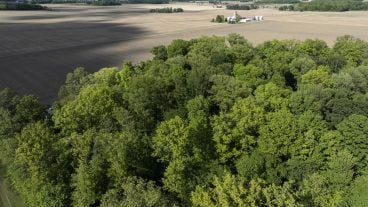

Learn what the requirements are to legally fly a drone in Ohio as well as steps the Ohio Legislature has taken in terms of security concerns.
Read More
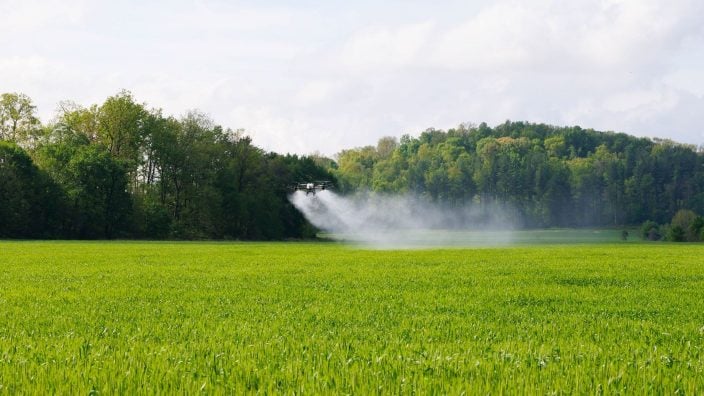
nuWay Ag is a company driven to help, lead, and educate farmers and pilots about the opportunities available with drone technology.
Read More
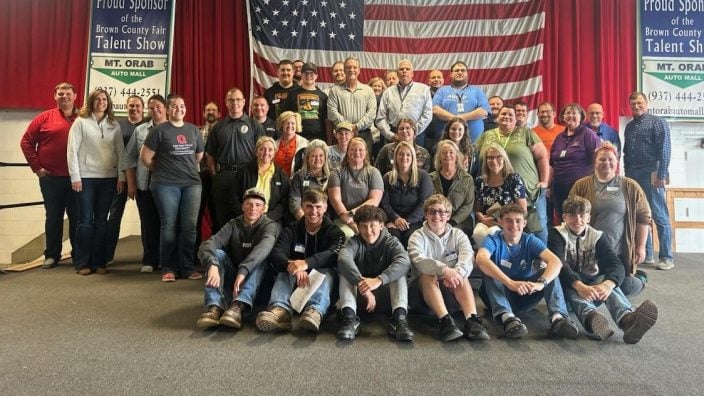
This transformative day of exploration was made possible by the Youth Pathways Grant for Careers in Agriculture, a signature program of the Ohio Farm Bureau Foundation.
Read More
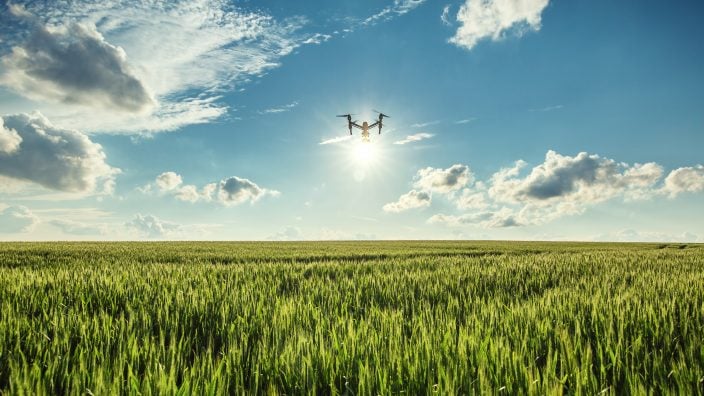
Find out what you need to know if a drone is in your farm’s future from the FAA’s Drone Guy, Kevin Morris
Read More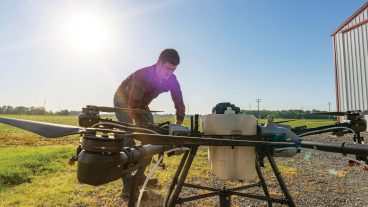
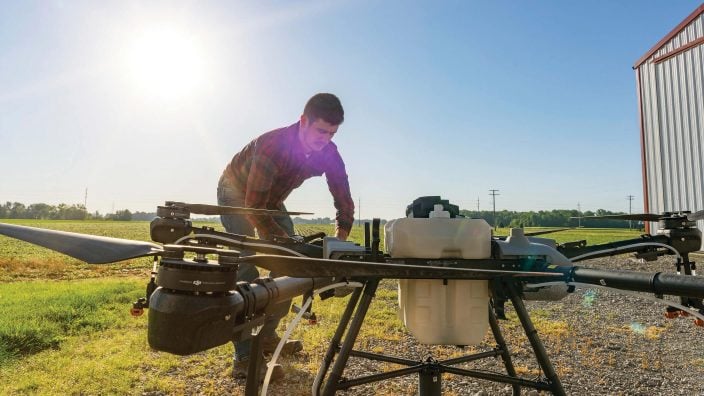
An Ohio implement dealer has signed an agreement with a drone manufacturer to help farmers, no matter the size and scope of the farm or drone experience, to begin using the latest technologies drones offer.
Read More

The use of drones on farms may be in its infancy, but it is expanding as climate change makes growing seasons more unpredictable.
Read More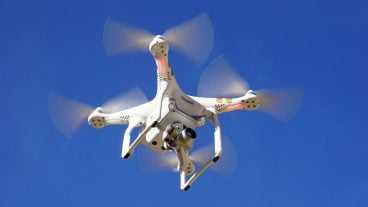
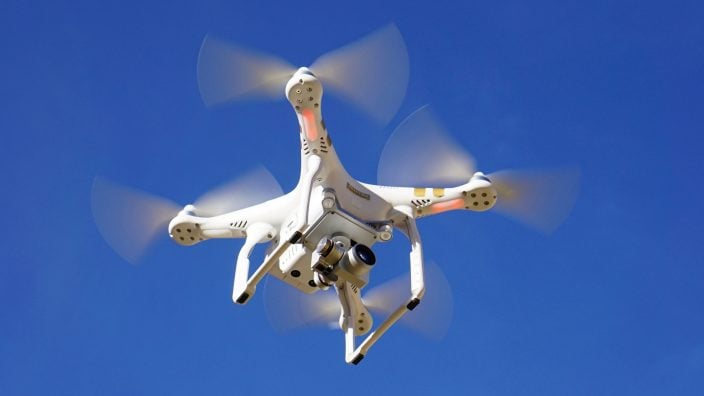
In 2017, Hamilton County Farm Bureau was one of eight Ohio county Farm Bureaus that earned a County Activities of…
Read More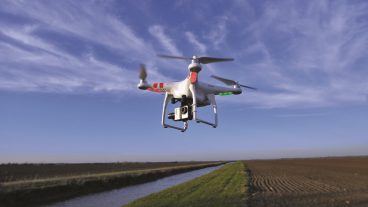

The following information is provided by Nationwide, the No.1 farm and ranch insurer in the United States. “As the use…
Read More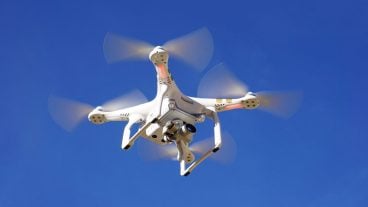
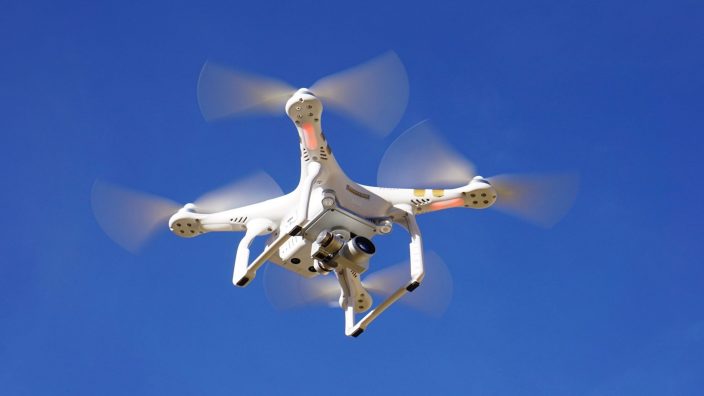
The Federal Aviation Administration has issued new regulations on the use of drones. What you can and can’t do is…
Read More

Who can operate a drone and for what purposes? OFBF Director of Agricultural Law Leah Curtis explains that as of…
Read More